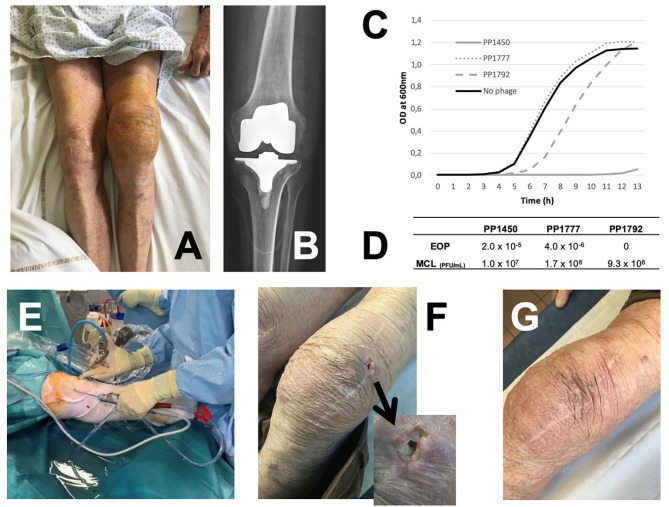Figure 1.
(A) Left knee joint effusion due to relapsing P. aeruginosa prosthesis knee infection; (B) X-ray showing no prosthesis loosening. The susceptibility of the patient's strain to the bacteriophages PP1450, PP1777, and PP1792 (phagogram) was performed using two complementary techniques: (C) For the kinetic assay, phages were incubated at a theorical multiplicity of infection (MOI, ratio of phages/bacteria) equal to 100 with the patient's strain. PP1450 was able to inhibit the bacterial growth (gray full line); PP1792 delayed the bacterial growth (gray dotted line) and PP1777 had no impact (gray dashed line). (D) For the plaque assay, titers obtained with the patient's strain and the reference strain are determined to calculate the efficiency of plating score (EOP) score (the closer to 1 is the score, the more efficient the phage is). Phages PP1450 and PP1777 were active on the patient's strain with an EOP score of 2.0 × 10−5 and 4.0 × 10−6, respectively. Partial lysis without PFU were observed for PP1792 (considered to have a weak bactericidal or bacteriostatic activity in this assay). (E) Arthroscopic DAIR with administration of the phage cocktail at the end of the procedure through the arthroscope. (F) Ulceration of a subcutaneous nodule on the external side of the knee observed 2 months after the arthroscopy. (G) Finally, a favorable outcome under suppressive antimicrobial therapy.

